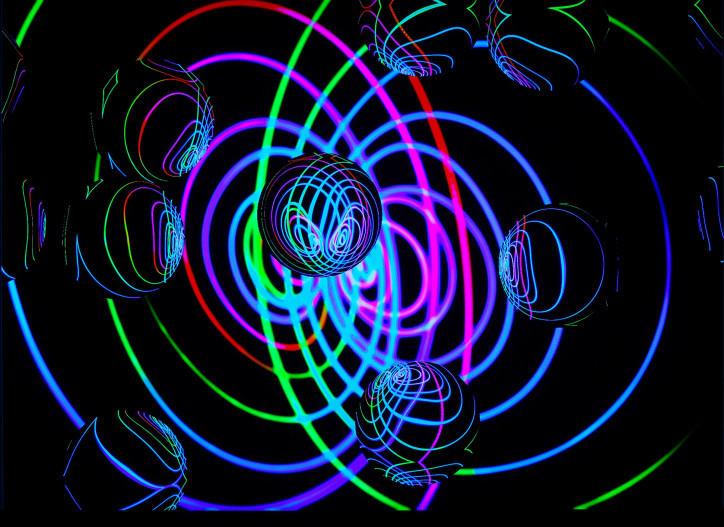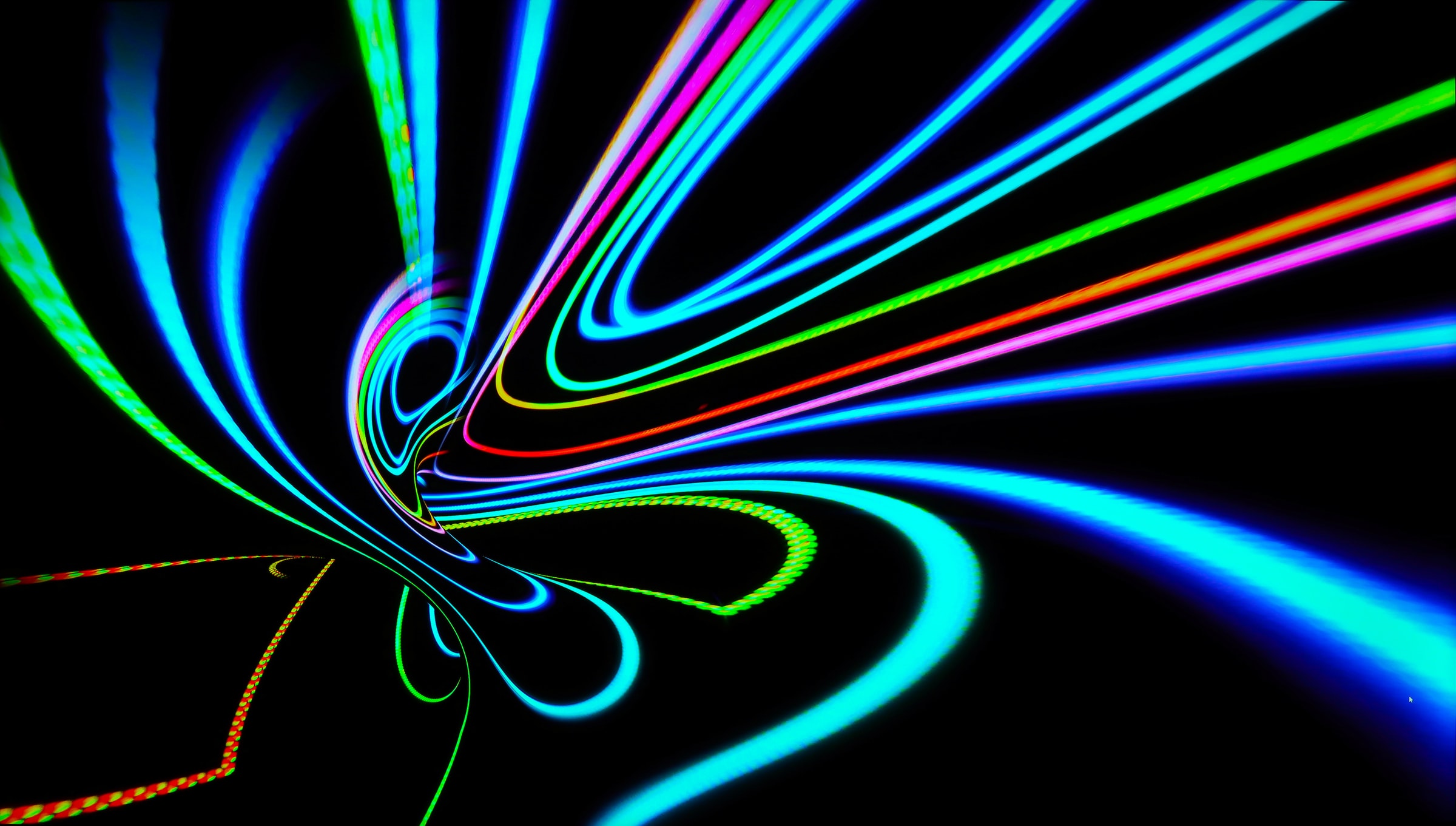
Is it possible that the machinery of the universe is based not on a solid foundation, but merely on a subtle game of reflections and relationships? This is the opinion of Carlo Rovelli, quantum physicist and philosopher.
According to Richard Feynman: “Nobody understands quantum physics.” Carlo Rovelli is not so uncompromising. He doesn’t think that quantum theory is incomprehensible. It might seem bizarre, but that is the result of our assumption that the world at its smallest scale must resemble its macro scale. In order to adapt to quantum mechanics, we must – for a moment – forget about Newton and the absolute perspective that his theory was based on. The universe can only be known from within, from a particular point of view.
Island calculations
Carlo Rovelli’s most recent book is entitled Helgoland. It is also the name of an island in the North Sea that Werner Heisenberg travelled to in 1925. He wanted to get some respite from his allergies (barely any trees grow there) and contemplate the issues concerning atomic structure that he had been discussing with his mentor, Niels Bohr. The young scientist’s journey of wellbeing and intellect culminated in one of the most significant breakthroughs in the history of physics. This is how Heisenberg described it, as quoted in Helgoland: “[…] it was around three o’clock in the morning when the result of my calculations lay before me. […] At first, I was deeply alarmed. I had the feeling that I had gone beyond the surface of things and was beginning to see a strangely beautiful interior. [….] I was so agitated that I could not sleep. I left the house and began walking slowly in the dark. I climbed on a rock overlooking the sea at the tip of the island, and waited for the sun to come up.”
In order to better comprehend Heisenberg’s excitement and the significance of his discovery, we must go back in time to the end of the 19th century, when science started to penetrate the subatomic structure of matter. In 1900, Max Planck announced that energy doesn’t exist in nature in random portions, but in packages called quanta. This discovery, initially received with mistrust, soon became the foundation of quantum mechanics. In 1913, Niels Bohr developed a model of the atom adapted for Planck’s law. He assumed that the electron’s orbits must also have only very specific values. This contradicted the laws of electrodynamics: in the macroscopic world, such orbits can have any radius. Not to even mention the fact that in Bohr’s model, electrons sort of teleport when they switch orbits. Bohr’s second postulate was also at odds with classical physics, according to which an electron orbiting around a nucleus emits no energy. But an orbiting charge should be an energy source! Bohr claimed that an electron only emits it when it jumps from a higher to a lower orbit – and absorbs it when it changes orbits in the opposite direction. When it just circulates, it transmits nothing. Bohr’s atom was, then, only half-based on traditional physics. Bohr added the other half on an ad-hoc basis, although it was in conspicuous conflict with the first one. This quantum-classical hybrid was what Bohr’s student, Werner Heisenberg, found when he started his own research.
Only what is seen
It was understandable for Heisenberg to be terrified with and delighted by the results of his Helgoland meditations. Terrified – because he completely departed the realm of traditional physics. Delighted – because everything became mathematically cohesive. Having started work on Bohr’s atom model, Heisenberg rejected from it every remnant of traditional macro-scale thinking. He stopped imagining electrons as orbiting particles reminiscent of planets. He no longer asked how it is possible for electrons to disappear from one orbit and appear in another. He left only observable facts, such as electron jumps that absorb or emit energy. It is thanks to the energy emitted (in the form of photons) that we can observe these events. “Everything is still very vague and unclear to me, but it seems that electrons no longer move in orbits,” he wrote in a letter to another physicist, Wolfgang Pauli.
It was 1925. The following year, Erwin Schrödinger would redesign the model of the atom so that the electron was no longer a particle, but a wave (designated by the Greek letter Ψ – psi). In mathematical terms, everything in this theory worked – and, importantly, it eliminated the strange jumps present in Heisenberg’s solution. But Schrödinger’s approach had a fundamental flaw. A wave spreads in an even, concentric manner, and an electron – when observed – is always in one specific location. It looked as if a particle is a wave when we don’t look at it, but when we do detect it, it’s a particle.
A reasonable interpretation of this phenomenon was offered by another quantum pioneer, Max Born, who claimed that the wave function needn’t be treated as physically present, but as the probability amplitude of detecting an electron in a specific point in space.
But this ‘wave of probability’ seems to be something more than just a mathematical device: it does seem like electrons and other particles sometimes behave like waves. This can be shown experimentally: if we let electrons pass through two narrow slits, a screen opposite will not show two smudges matching the slits, but distinctive light and dark stripes, which signify that we are dealing with a wave. The two discrete parts of the wave travelling through the two slits overlap, amplifying each other in certain places. We call this interference. Surprisingly, it can be observed even when we fire single electrons – each new one adds a new dot to the stripey pattern. A single particle also behaves like a wave, until it reaches the screen and registers there in a specific place. Then it turns out to be a particle. What’s more: if we cover one slit, this single electron will travel ‘normally’ – as if it knew that the other slit is no longer open and that it no longer needs to be a wave.
If we uncover the slit again, the particle will travel like a wave again, so it must be concluded that it is in many places at the same time. However, we won’t find it in these many places, always just in the single specific one.
A particle that seems to be in many places at once is said to be in a superposition of states. This superposition disappears once we make a measurement, which is sometimes called wave function collapse. Schrödinger’s cat-related thought experiment is a certain variation on this topic: the animal is put into a box with a clever, deadly mechanism operating according to quantum principles. Until we make a measurement – i.e. open the box – the cat must be considered both dead and alive.

How should we understand all this? First of all, let’s bear in mind that we don’t have to understand it at all. Quantum mechanics functions very well without comprehension – it’s a collection of theorems, equations and computational methods that yield excellent results and can be used as a basis for the construction of computers and nuclear bombs. This approach has taken on the name of ‘Copenhagen interpretation’ – from the city that was at the heart of quantum theory in the 1920s thanks to Niels Bohr, who was Danish. However, as proven by physicist and science historian Jim Baggott, the Copenhagen interpretation was really conceptualized in the post-war US. At that time, contemplating the ultimate foundations of reality was relegated to the background, while the thing that gained precedence was working out algorithms that would accurately predict the results of experiments, and hence could promote the development of technology. Physicist David Mermin described this attitude pithily: shut up and count.
This attitude still functions among physicists and is often espoused by specialists with impressive achievements. But there are also restless spirits for whom accurate calculations aren’t enough to consider something fully understood.
Universes and waves
Today – apart from the Copenhagen one – the best-known interpretation of quantum mechanics is the many-worlds interpretation. According to it, the wave function is very much real, and all the states it allows exist. The observer sees that a particle leaves a trace in a specific place, but they themselves are also described by a wave that contains many equally legitimate states: in a parallel world the observer sees the particle land somewhere else. This sort of divergence of worlds happens constantly, in countless locations. The world in which we live is only one of many options that all exist in parallel and are equally legitimate.
This interpretation was authored by Hugh Everett III. He took quantum mechanics to its ultimate conclusion, proposing the notion of a universal wave function that encompasses infinite possible universes. When Everett announced his idea in 1956, it wasn’t received enthusiastically, but since the 1970s it has gained many devout supporters: philosophers, physicists and sci-fi enthusiasts. Carlo Rovelli isn’t one of them: “The gigantic, universal ψ wave that contains all the possible worlds is like Hegel’s dark night in which all cows are black: it does not account, per se, for the phenomenological reality that we actually observe,” he writes in Helgoland. In other words: reducing everything to some all-encompassing absolute gives us no concrete knowledge.
Another active interpretation is the pilot wave theory by Louis de Broglie and David Bohm. According to this approach, in the double-slit experiment the electron only passes through one of the slits, but is led by a wave that travels through both. The wave guides the particle to adopt a specific trajectory. This explains why, once we close the slit through which the particle doesn’t pass, its trajectory changes. It happens, because in this way we affect the wave that guides the particle.
Carlo Rovelli isn’t an adherent of this interpretation, either. As he notes, it can become problematic in settings that are a little bit more complex. “The ψ wave of more particles, for example, is not the sum of the single particles: it is a wave that does not move in physical space, but in an abstract mathematical space,” he writes.
No essence
What, then, does Rovelli himself propose? The Italian scientist co-created an interpretation that he calls relational quantum mechanics. This is how he presents it: “At the heart of the ‘relational’ interpretation of quantum theory is the idea that the theory does not describe the way in which quantum objects manifest themselves to us (or to special entities that do something special denoted ‘observing’). It describes how every physical object manifests itself to any other physical object. How any physical entity acts on any other physical entity.”
One must first give a definition of these physical objects or entities that – according to the description above – manifest themselves to each other. Rovelli thinks that objects are nothing but their way of acting on other objects. Physical entities exist in relation to each other. They do not have some sort of independent hard core that ensures their existence independent of everything. Reality is a network of relationships between objects, which are equivalent to these relationships. Schrödinger’s cat may seem both alive and dead only to an observer who is outside the box. From the perspective of the cat itself, the question is settled.
Carlo Rovelli’s idea has undeniable charm, which probably largely stems from the fact that its author writes wonderful books intended for a wide readership. In Helgoland, he refers not only to Werner Heisenberg and other creators of quantum theory, but also to the Austrian scientist Ernst Mach, the Soviet philosopher Bogdanov (famous for his feud with Lenin) and Nāgārjuna, the Buddhist thinker from the second century. The latter claimed that there is no ultimate substance to all things: phenomena are empty (what’s more, emptiness itself also isn’t at their core). “Nāgārjuna has given us a formidable conceptual tool for thinking about the relationality of quanta: we can think of interdependence without autonomous essence entering the equation,” writes Rovelli. Ernst Mach, in turn, was a positivist and empiricist who thought it was necessary for science to be cleansed of all categorical metaphysics. According to him, metaphysical notions included the concepts of cause, atom and absolute time and space – Albert Einstein would later think in a similar vein.
The idea that it is impossible to speak about absolute time and space is related to Rovelli’s main concept: that we can only experience the world from the inside, from a specific perspective. It is impossible to acquire a universal point of view, one that would be ultimately objective. In one of his previous books, Reality Is Not What It Seems, Rovelli mentions the 13th-century scientist Brunetto Latini and his manuscript Li Livres dou Trésor (The Book of Treasures), in which the Earth’s spherical shape is described not in analogy to an orange or a ball, but a bit like this: if not for the seas and oceans, a man who walked straight ahead long enough would return to his point of departure. Today, of course, we are able to look at the planet from the outside, but it’s possible that such a humble, internal perspective can still be helpful as we penetrate the fundamental issues, wanting to “[go] beyond the surface of things […] to see a strangely beautiful interior.” According to Rovelli, on the level of that interior the world is granular. It cannot be divided into infinity, there are certain final ‘pixels’. This is why we can’t escape quantum jumps – only to us, giants from a quantum perspective, could reality seem continuous.
Finally, it behoves us to describe the reception that Rovelli’s concept has received from other specialists. The above-mentioned Jim Baggott devotes a lot of attention to it in his book Quantum Reality. He admits that the relational interpretation has many merits, because thanks to it many issues that could torment us are rendered meaningless. If, really, relationships are the only thing to exist, we no longer need to ask ourselves so many uncomfortable questions. We can stop wondering what it is that physically happens between the moment when the electron is emitted and when it hits the screen on the other side of the barrier with the two slits. We have a trace in a specific location and this is reality from our perspective. Jim Baggott, however, is of the opinion that at its core, this approach is not really that different from the one described by the phrase “Shut up and count”.
Is it really the case? Certainly, for the general audience there’s a big difference, because Carlo Rovelli roots quantum mechanics not only in experimentally-verified mathematical formalism, but also in a specific philosophical view of the world. He tries to combine science with the everyday, human experience of the world. Perhaps he is like Brunetto Latini’s traveller who circled the Earth only to return where he started – but from his perspective, the journey made sense.

Translated from the Polish by Marta Dziurosz









